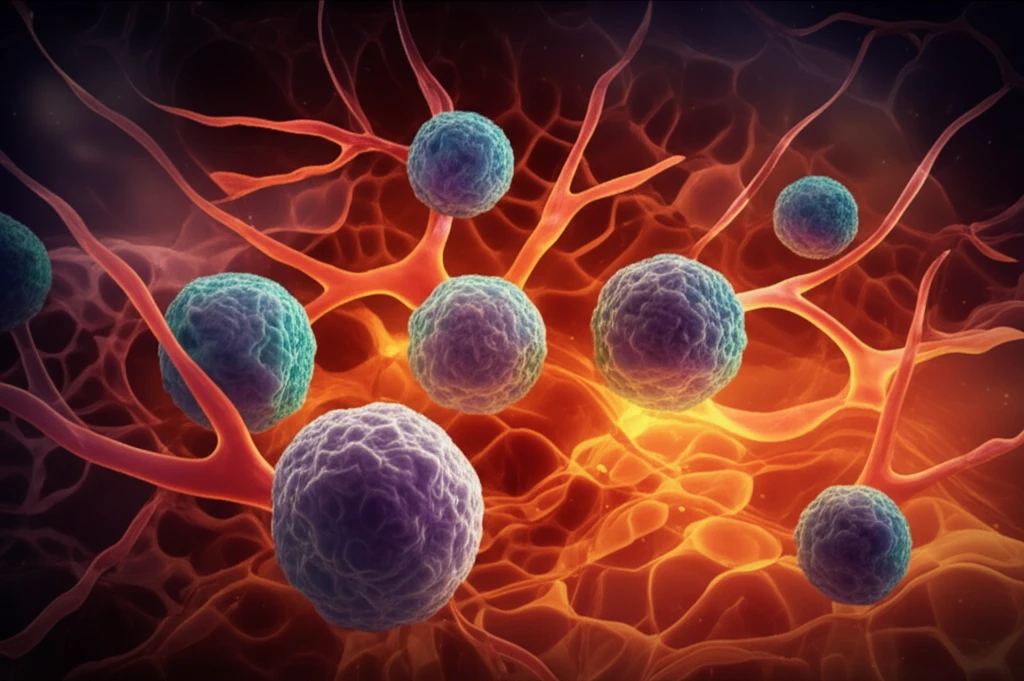
Unlocking the Mystery of Systemic Juvenile Idiopathic Arthritis: How Immune Cells Hold the Key
"A new study reveals the critical role of polymorphonucleates in the development of systemic juvenile idiopathic arthritis (sJIA) and adult-onset Still's disease (AOSD), offering potential new avenues for treatment."
Systemic juvenile idiopathic arthritis (sJIA) is a complex autoinflammatory condition primarily affecting children. It's characterized by a distinct set of symptoms, including persistent fever, rash, and arthritis. Central to the disease is an overactive immune system, where neutrophils, a type of white blood cell, play a significant role.
Adult-onset Still's disease (AOSD) mirrors sJIA in adults, sharing similar inflammatory pathways. Both conditions are marked by an excess of pro-inflammatory cytokines, particularly IL-1β. This cytokine's role is so critical that IL-1 blockers have proven effective in managing these diseases. However, the precise mechanisms by which neutrophils contribute to the excessive inflammation have remained unclear.
A recent study has shed new light on how neutrophils behave differently in patients with sJIA and AOSD compared to healthy individuals. Researchers investigated the activation state and responsiveness of neutrophils (PMNs) to external stimuli. The results offer valuable insights into potential therapeutic interventions.
Neutrophils: Key Players in sJIA and AOSD Inflammation?

The study compared PMNs from sJIA patients, AOSD patients, and healthy controls (HC). Researchers collected blood samples and isolated PMNs to analyze their behavior under controlled conditions. All patient samples were taken during both active and non-active phases of the disease.
- Increased IL-1β Secretion: PMNs from both sJIA and AOSD patients secreted significantly more IL-1β after LPS stimulation compared to healthy controls (p<0.05). This suggests that PMNs in these patients are primed to release higher amounts of this pro-inflammatory cytokine when triggered.
- Caspase-1 Inhibition: Pretreating PMNs with a caspase-1 inhibitor reduced IL-1β secretion. Caspase-1 is an enzyme crucial for activating IL-1β, confirming that the inflammasome pathway is involved in the excessive IL-1β production.
- Elevated ROS Levels in sJIA: sJIA patients exhibited higher intracellular ROS levels in their PMNs compared to healthy controls at baseline (p<0.05). This indicates a heightened state of oxidative stress and activation within these cells.
- Increased Activation Markers in sJIA: The expression levels of CD11b and CD66b, markers of neutrophil activation, were also elevated in sJIA patients compared to healthy controls (p<0.01 and p<0.05, respectively). This further supports the notion that sJIA neutrophils are in a more activated state.
- No Significant Differences in AOSD Activation: Unlike sJIA, no significant differences in ROS levels or activation marker expression were observed between AOSD patients and healthy controls.
Future Directions: New Avenues for Treatment
This research highlights the potential of targeting PMNs to manage sJIA and AOSD. The study suggests that reducing PMN sensitivity to inflammatory triggers or modulating their activation state could lead to novel therapeutic strategies. Further research is needed to confirm these findings and explore the specific mechanisms driving PMN activation in sJIA and AOSD. However, the trends observed offer a promising direction for developing more targeted and effective treatments for these debilitating conditions.
